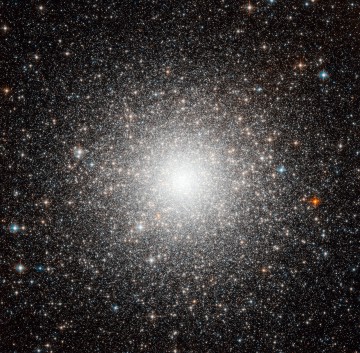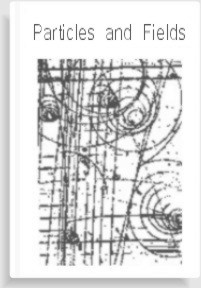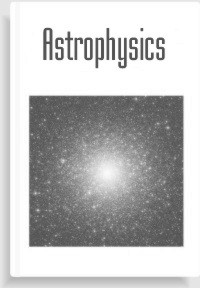
The image at left is a Hubble telescope image of Messier Object 54 (M54), a Globular Cluster located in the southern constellation Sagittarius with an estimated age of 13 billion years - 1 billion more than our solar system. Once thought to be within our galaxy, the Milky Way, it is now believed to lie at the center of the Sagittarius Dwarf Elliptical Galaxy, one of the Milky Way's satellites, some 90,000 light-years (16,740,000,000 miles) from our Solar System.
This object is truly amazing. It is the first globular cluster found outside of our own galaxy. The cluster occupies an area of only 12 arc-minutes - corresponding to a radius of 153 light years. Containing more than a million stars, it is one of the densest globular clusters yet known having a Shapley-Sawyer (density) classification of III.
The cluster has a luminosity of 850,000 times the Sun, with most of the light emanating from a central area (core) only 2.1 arc-minutes in diameter. The nucleus is estimated at 1 arc-minute and in 2009 an intermediate-mass black hole was discovered at its center making it the first such object ever located in a globular cluster. The black hole has an estimated mass of 9,400 Solar Masses - 3,726,400,000,000,000,000,000,000,000,000,000,000 pounds!
The black hole lies at the center of the galaxy. Some believe it is the core of the galaxy while others (including myself) believe it was once a true globular cluster whose orbit decayed due to gravitational drag; a phenomenon where a celestial body loses kinetic energy and momentum due to gravitational interaction with objects in its close vicinity.
Blue Hook stars, a rare class of the horizontal branch stars plotted on the Hertzsprung-Russell diagram are found in this cluster. Normal Horizontal Branch stars are in the Helium burning phase and having shed their outer envelope are perhaps one Solar Mass. These stars are the remnant of the final evolution of a Red Giant star. Blue Hook stars are less massive than canonical Horizontal Branch stars. One mechanism proposed for this is the Red Giant progenitor had a very high spin and thus shed much more of its envelope when it contracted.
The component stars are very close; as close as one light-year near the center and possess high radial velocities. Nevertheless collisions between stars appear non-existent and expulsions from the cluster are rare. Sounds much like the bag model our much smaller Quark friends. Could these stars enjoy Asymptotic Freedom?





